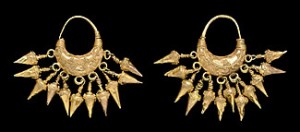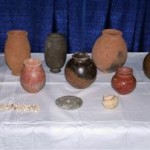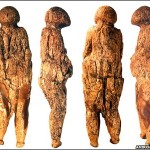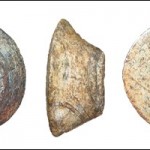I read an excellent book a while back (mentioned in this entry) which looked at the fall of Rome from a consumer standpoint, as the “the loss of comfort” when the global Roman economy crumbled.
One of the goods he followed was mass-produced, low cost, high quality pottery. Pottery was a major consumer need for food storage, transportation, lighting, cooking, you name it. Roman production spread easily purchasable pottery from Britain to Africa to Asia, thereby extending consumer comforts far and wide across geographic distance and all social classes.
When the trade routes broke down and the Germanic tribes took over/destroyed production centers, high quality pottery basically disappears from the European archaeological record until the Renaissance. That’s such a major blow to quality of life it’s hard to conceive of today.
With that in mind, here’s a great example of the Roman consumer production machine, a pottery factory uncovered in Modena.
“We found a large ancient Roman dumping filled with pottery scraps. There were vases, bottles, bricks, but most of all, hundreds of oil lamps, each bearing their maker’s name,” Donato Labate, the archaeologist in charge of the dig, told Discovery News.
Firmalampen, or “factory lamps,” were one of the first mass-produced goods in Roman times and they carried brand names clearly stamped on their clay bottoms.
The ancient dumping in Modena contained lamps by the most famous brands of the time: Strobili, Communis, Phoetaspi, Eucarpi and Fortis.
All these manufacturers had their products sold on the markets of three continents. Fortis was the trendiest of all pottery brands and its products were used up to the end of the second century A.D.
Surprisingly familiar isn’t it? I could totally see Fortis brand lamps available at my local Home Depot. Now imagine losing something so basic for a thousand years.





